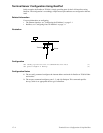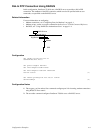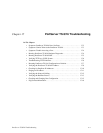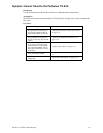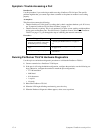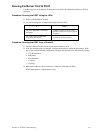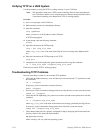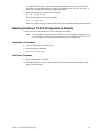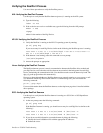17-6 Verifying TFTP on a UNIX System
Verifying TFTP on a UNIX System
Use this procedure to verify that TFTP is working correctly on your UNIX host.
Note: This procedure, which uses a TFTP transfer of the Digi Device's boot image between
two UNIX hosts, enables you to compare the size of the boot image before and after it
is transferred, enabling you to determine if TFTP is working properly.
Procedure
1. Access a root prompt on the UNIX host.
2. Make sure that you are not in the /tftpboot directory.
3. Enter this command:
tftp ipaddress
where ipaddress is the IP address of the UNIX host.
A TFTP prompt appears.
4. At the prompt, enter the following command:
binary
5. Enter this command at the TFTP prompt:
tftp > get tftp_file_name
where tftp_file_name is the name of the Digi Device's boot image in the /tftpboot direc-
tory.
6. Enter this command at the TFTP prompt to exit TFTP:
tftp quit
7. Compare the size of the original file against the transferred file using this command:
ls -l tftp_file_name /tftpboot/tftp_file_name
If the file sizes match, TFTP is working properly.
Troubleshooting TFTP Problems
Here are some things to check if you encounter TFTP problems.
• Verify that the /tftpboot directory exists and has read, write and execute (777) permissions with
this command:
ls -l /tftpboot
If necessary, use this command to create the directory:
mkdir /tftpboot
• If necessary, use this command to change permissions of the directory to read, write and execute:
chmod 777 /tftpboot
• Verify that the file /tftpboot/ftp_file_name exists and has read and execute permissions with this
command:
ls -l /tftpboot/ftp_file_name
where ftp_file_name is the name of the firmware boot image specified by the Digi Device.
If necessary, use this command to change permissions of the file to read and execute:
chmod 666 /tftpboot/ftp_file_name
• Verify that the inetd.conf file is properly configured for tftp by displaying the file /etc/inetd.conf.
An entry similar to this should be uncommented:
tftp dgram udp something
where something will vary with each operating system.



